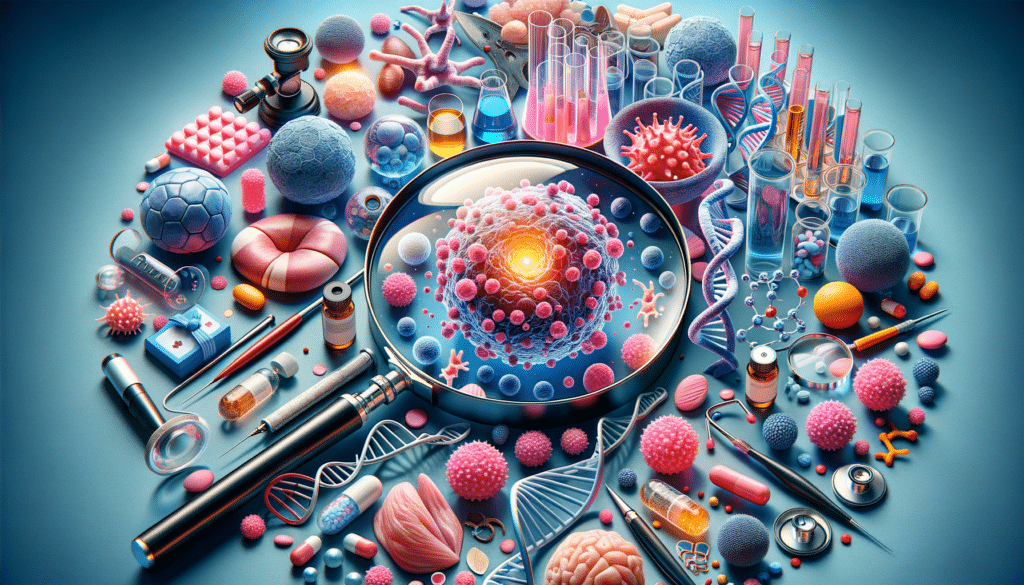Understanding Triple Negative Breast Cancer
Triple Negative Breast Cancer (TNBC) is a subtype of breast cancer characterized by the absence of estrogen and progesterone receptors and the lack of excess HER2 protein. This makes it distinct from other breast cancer types, which often rely on these receptors for growth. TNBC accounts for approximately 10-20% of all breast cancer cases and is known for its aggressive nature and limited treatment options. Understanding TNBC is crucial for developing effective therapies, as it tends to affect younger women and is more common in certain ethnic groups, such as African American women.
The absence of the three receptors means that many common treatments, like hormone therapy and drugs targeting HER2, are ineffective against TNBC. This leaves chemotherapy as the primary conventional treatment, often accompanied by surgery and radiation. However, the aggressive behavior of TNBC, coupled with its high recurrence rate, necessitates ongoing research into alternative therapeutic strategies. Researchers are exploring various avenues, including targeted therapies and immunotherapies, to improve outcomes for TNBC patients.
Current Treatment Approaches
The treatment landscape for TNBC is evolving, with chemotherapy remaining a cornerstone of therapy. Standard chemotherapy regimens, such as anthracyclines and taxanes, are commonly used, but their effectiveness can vary significantly among patients. The aggressive nature of TNBC often requires a combination of treatments to achieve the best results.
In recent years, the introduction of platinum-based chemotherapies has shown promise in treating TNBC. These drugs work by damaging the DNA of cancer cells, preventing them from dividing and growing. Additionally, research into targeted therapies is ongoing, with PARP inhibitors emerging as a promising option for patients with BRCA1 or BRCA2 mutations. These inhibitors block an enzyme used by cells to repair damaged DNA, making them particularly effective in cancer cells with existing DNA repair deficiencies.
Innovative Therapeutic Strategies
As TNBC lacks the common receptors targeted by many treatments, innovative strategies are crucial. Immunotherapy, which harnesses the body’s immune system to fight cancer, is one such approach. Checkpoint inhibitors, a type of immunotherapy, have shown potential in treating TNBC by blocking proteins that prevent the immune system from attacking cancer cells.
Another promising area of research is the development of antibody-drug conjugates (ADCs). These are engineered molecules that combine an antibody with a cytotoxic drug, allowing for targeted delivery of the drug to cancer cells. ADCs are designed to minimize damage to healthy cells while maximizing the impact on cancerous ones. Clinical trials are underway to evaluate the efficacy of various ADCs in TNBC treatment.
Challenges and Future Directions
Despite advancements, treating TNBC remains challenging due to its heterogeneity and aggressive nature. One of the main hurdles is the development of resistance to existing therapies, which limits long-term effectiveness. The lack of specific targets also complicates the development of new treatments, making personalized medicine an important focus for future research.
Researchers are investigating the molecular and genetic underpinnings of TNBC to identify potential targets for therapy. Understanding the tumor microenvironment and its role in cancer progression is another area of interest, as it may reveal new therapeutic avenues. The integration of genomics and bioinformatics into clinical practice could lead to more personalized treatment plans, improving outcomes for TNBC patients.
Conclusion
Triple Negative Breast Cancer presents unique challenges in the field of oncology, but ongoing research offers hope for more effective treatments. By exploring innovative strategies such as immunotherapy and targeted therapies, scientists aim to improve the prognosis for patients with this aggressive cancer subtype. Continued efforts to understand the biology of TNBC and the development of personalized approaches hold promise for the future of cancer care.





